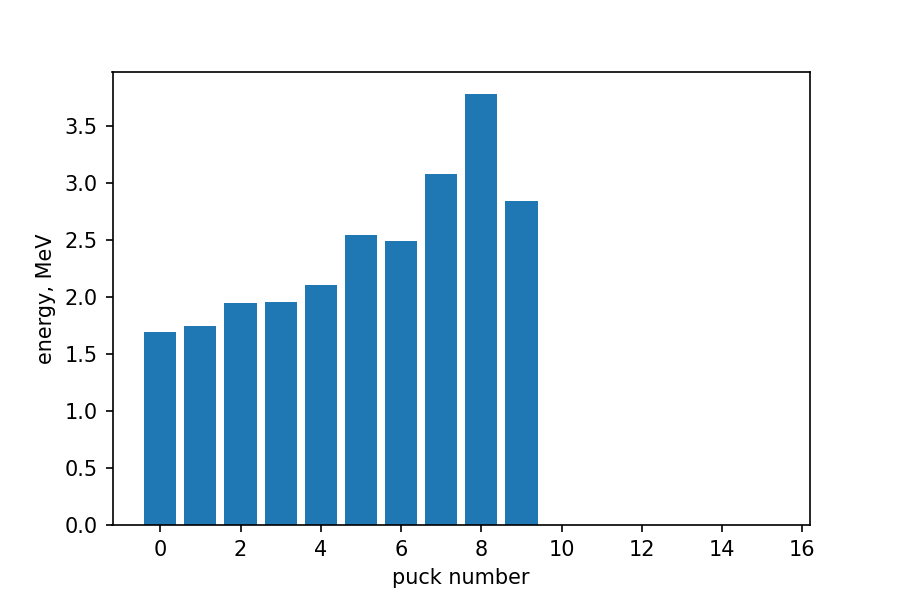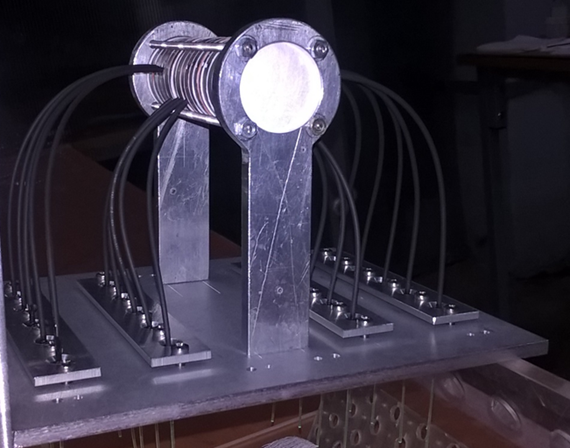
A laboratory prototype of a solar cosmic ray detector was assembled.

The detector channels were calibrated with cosmic muons. A theoretical formula for muon signal within a detector channel distribution was obtained:
f(\varepsilon) =
\begin{cases}
f_0 \frac{\varepsilon_0^3}{\varepsilon^4 \sqrt{1 - (\frac{\varepsilon_0}{\varepsilon})^2}} &\text{, $\varepsilon$ < 7.65 MeV}\\
f_0 \frac{\varepsilon_0^3}{\varepsilon^4 \sqrt{1 - (\frac{\varepsilon_0}{\varepsilon})^2}} + f_0 \varepsilon_0 \left(\frac{2r}{\varepsilon d}\right)^2 \sqrt{1 - (\frac{2r\varepsilon_0}{\varepsilon d})^2}&\text{, $\varepsilon \in (7.65 MeV, 7.72 MeV)$}
\end{cases} |
This distribution was convoluted with Gaussian distribution, which characterizes the channel error. Experimental muon data were fitted with the convolution and the calibration with channel errors were obtained:
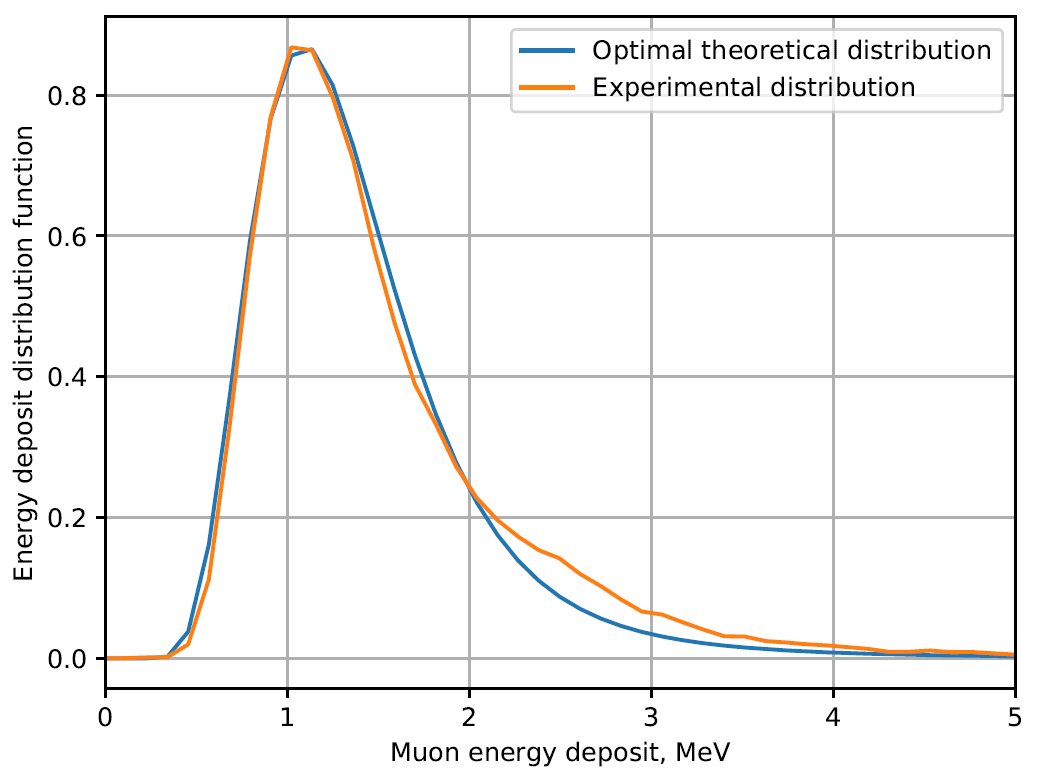
The detector was tested at the proton accelerator of the INR RAS. The stand for the experiment was assembled.
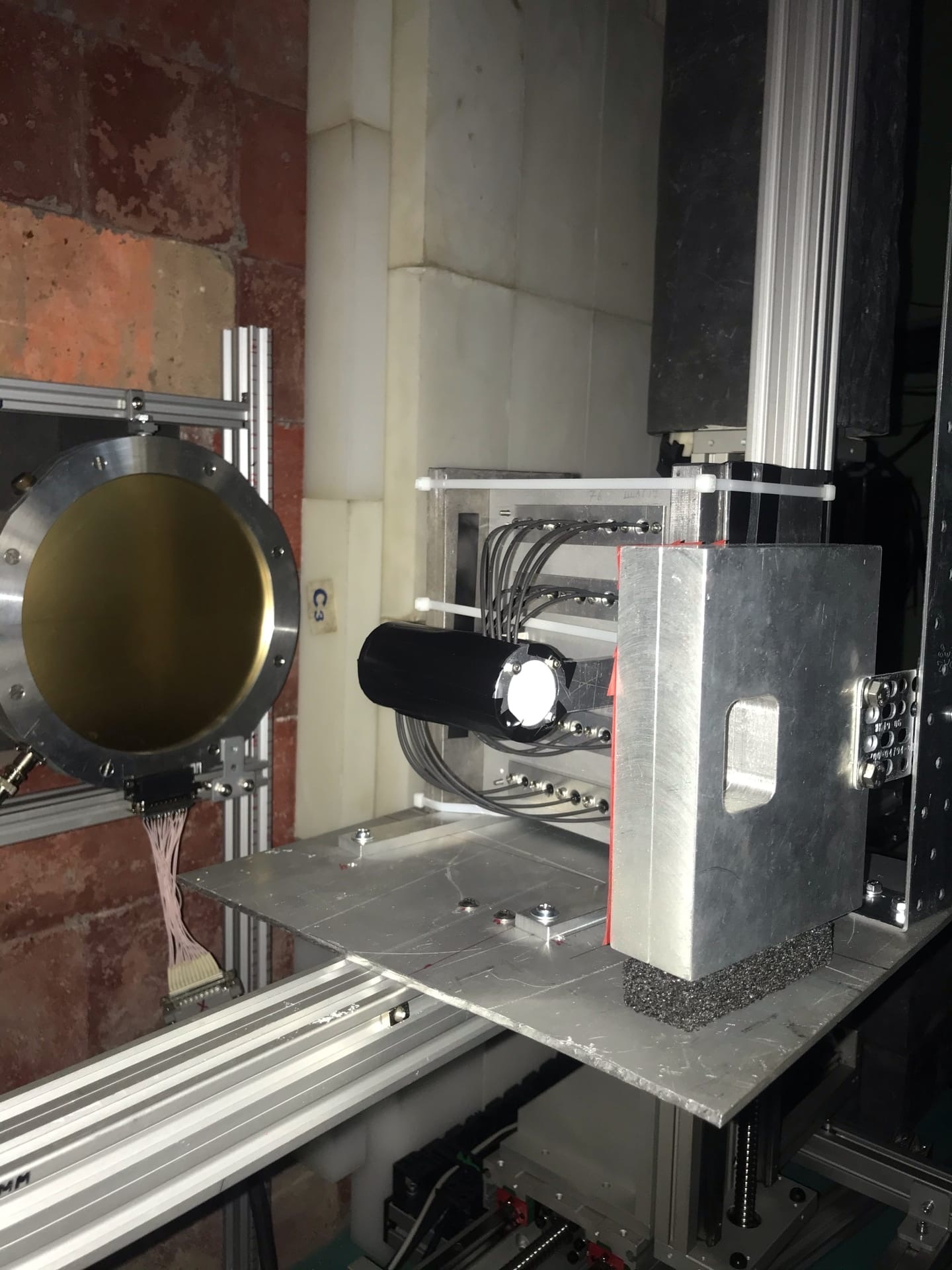
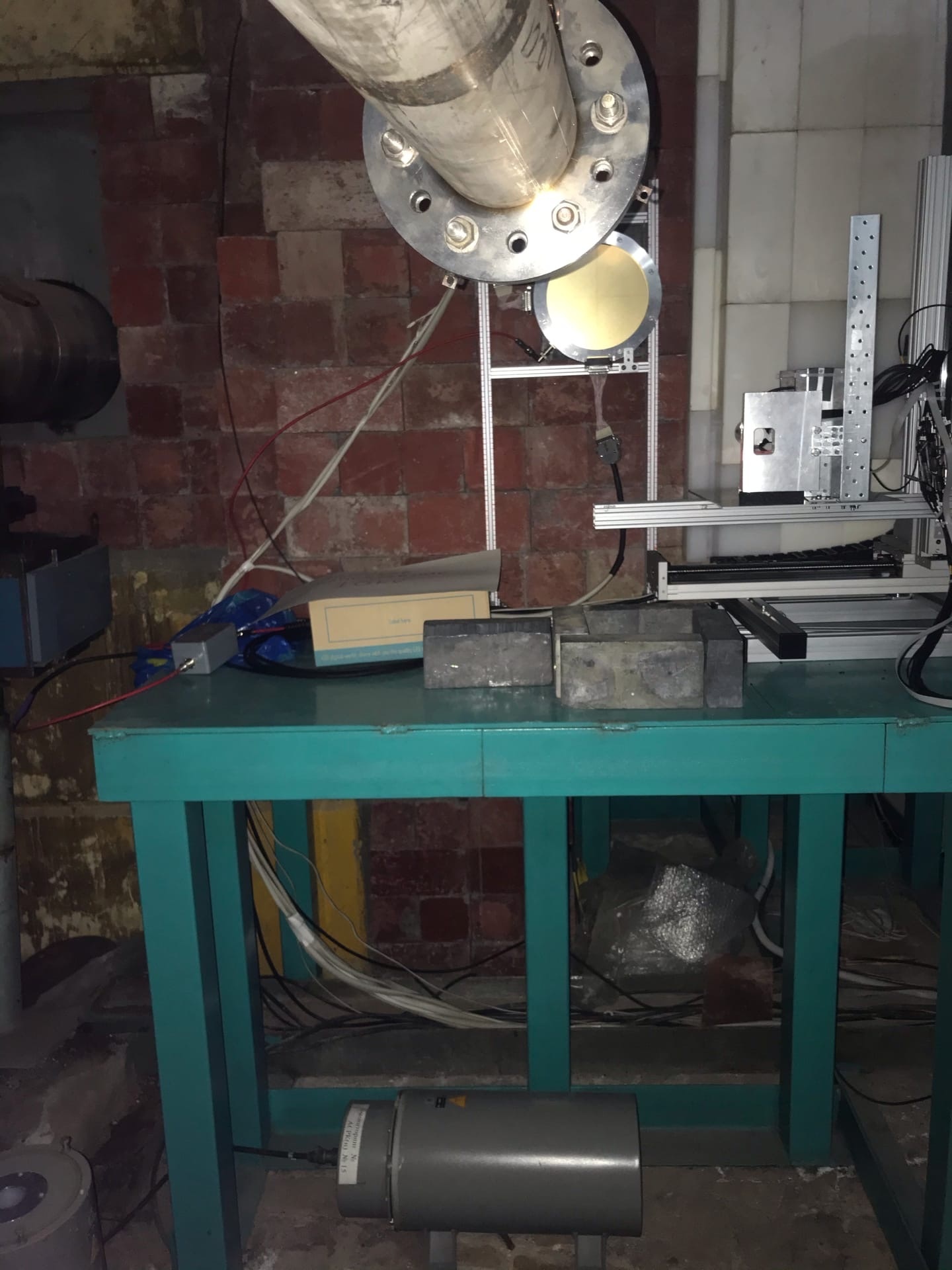
Protons with kinetic energy 74 MeV were successfully detected.
